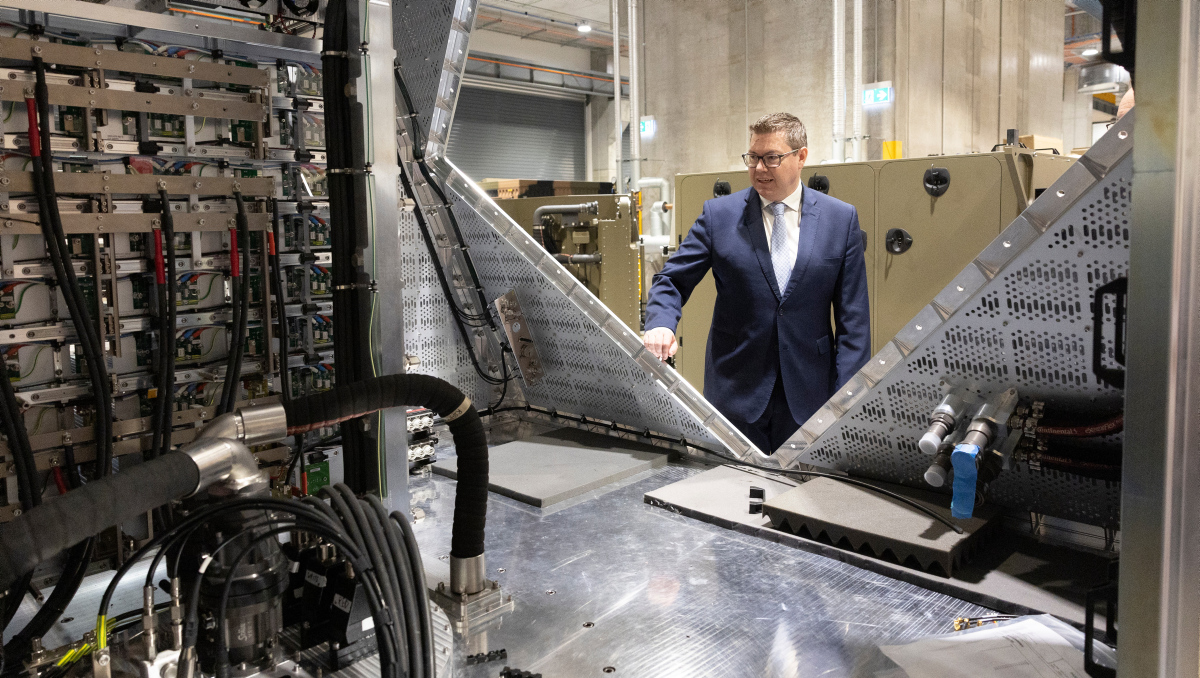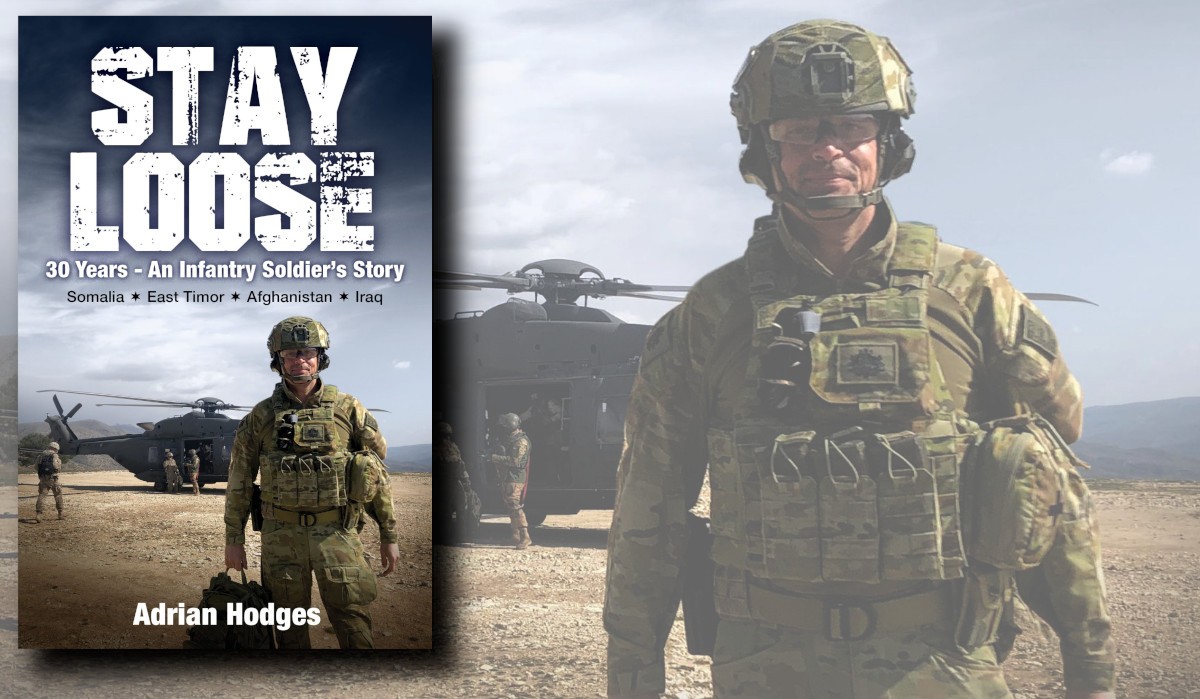Capability is a Team Sport – The Committee System
Part One in this series of Land Power Forum posts introduced some capability definitions, and highlighted how deteriorating strategic circumstances have changed the strategy that guides ADF capability development. It also provided some examples of the process underway to transform the Australian Army into one focused on littoral manoeuvre capable of control of strategic land position with long-range strike capabilities.
This post will discuss the importance of committees, the Integrated Investment Program and some of the key parties on the Investment Committee (IC) who are involved in approving capability acquisitions. Capability is a team sport, which requires a host of interactions both within and outside the Department of Defence.
The Key Committees
First of all, what is a committee? In essence, a committee is a group of people who meet to make decisions or plans for a larger group or organisation that they represent. Defence is a big organisation and its operation is relatively complex. A committee helps ensure that all decision-makers understand the full implications of their decisions.
The senior committees in Defence are so important that they have unique behaviours associated with them.[1] Of relevance to this post, a focus on collaboration is a key behaviour of Defence committees. Collaboration can be described as inclusive cross-entity performance, working toward aligned/shared objectives and outcomes.
The word used is ‘collaboration’ and not ‘consultation’. This is a deliberate choice. Consultation suggests exchanging information and opinions about something to ensure that everyone is informed. Collaboration is more active. It is the action of working with someone to produce something. This means that if you want a document (in which you have invested hours of work) to be endorsed by a committee, you need to accept that it will change during the process of collaboration. Expect feedback, seek it if it is not given, and make the necessary adjustments. All the while, ensure the document holds to the key capability arguments associated with achieving a minimum viable capability.[2]
Counter-intuitively a successful committee outcome is one in which your document is not discussed. This is because all of the work has been done during the collaboration that preceded your document’s submission to the committee. If it is not discussed, all of the committee members are already comfortable with its contents and know that their staff have had a hand in shaping its content. Collaborate early and often. This article will now briefly discuss the Integrated Investment Plan.
Integrated Investment Plan
According to the Defence Capability Manual, the Integrated Investment Plan (IIP) provides a rolling capital investment plan that ensures force structure addresses priorities and is affordable.[3] The latest version of the IIP released in 2024 with the National Defence Strategy (IIP 24) varies from this usual principle. Instead of being a rolling plan, it is focused on the following time periods:[4]
- now until 2025 – the Enhanced Force‑in‑Being will focus on immediate enhancements that can be made to the current force.
- 2026 to 2030 – the Objective Integrated Force will see the accelerated acquisition of critical capabilities.
- 2031 and beyond – the Future Integrated Force will see the delivery of an ADF that is fit for purpose across all domains and enablers.
IIP 24 prioritises investments of $36‑$44 billion to enable Army to rapidly transform in response to Australia’s changing strategic circumstances.[5] By 2026, Army’s divisions, commands and formations will have a new structure and posture. Army will have the capability to hold potential adversary forces at risk, control key strategic land positions, maintain persistent forward partnerships, and protect and sustain deployed forces within Australia’s primary area of military interest. The words ‘control’, ‘maintain’, ‘protect’ and ‘sustain’ are so-called ‘task verbs’ that Army personnel are familiar with. Army’s capability submissions need to ensure that it can either achieve or enable these tasks.
The Government’s investment in shipbuilding will result in an Army equipped with 18 Landing Craft Medium and eight Landing Craft Heavy.[6] This will be achieved through an investment of $7‑$10 billion in littoral manoeuvre vessels and $5‑$7 billion in related facilities.[7] The acquisition of land based long‑range fires will be accelerated and expanded.[8] In Part One of this series of posts, I highlighted the announcements relevant to Army’s first and second long‑range fires regiments. The introduction of new land-based radar systems and communications capabilities will extend Army’s sensor and command and control networks.
Finally, there is investment in the more traditional areas of Army capabilities to enhance the combined‑arms land system.[9] This includes the introduction of 75 M1A2 Abrams main battle tanks, as well as the acquisition of: 29 armoured breaching vehicles, 17 joint assault bridges, 129 Redback infantry fighting vehicles, 30 AS9 Huntsman self‑propelled howitzers, and 15 AS10 armoured ammunition resupply vehicles. The production lines for the Redback and Huntsman will be in Australia from 2026 for delivery between 2027 and 2029.[10] These platforms contribute to a system capable of providing highly protected close‑combat capabilities. The Chief of Army recently reinforced his view that the physical component of Army’s fighting power is increasingly assured.[11]
Also included is the investment in deployable counter small uncrewed aerial systems capabilities for the ADF and there is a sizable investment in land command systems. The funding for the land command system is $150m in approved funding and between $5.0bn to $7.0bn in unapproved funding. The phrase ‘unapproved funding’ is important. Even though these capabilities are in IIP 24, the Army still needs to present its argument to government to get unapproved funding turned into approved funding that will allow their acquisition.
Capability Manager’s Gate Review
The Capability Manager’s Gate Review (often referred to as CGR), is where the Army Capability Manager (or Project Sponsor in capability parlance) prepares a business case for a project. This business case consists of an overview, the Joint Capability Needs Statement (JCNS) and the Project Execution Strategy (PES).[12] JCNS is developed to describe the capability adjustment sought and its strategic relevance. These descriptions are closely linked to DSR 23 and NDS 24. The JCNS is considered by Head Force Design (HFD) and Head Force Integration (HFI) to confirm its alignment with direction provided by the integrated force design and interoperability direction.
The PES is a high-level strategy for the execution of a project across the life of a product. It is developed by the Lead Delivery Group, supported by the Capability Manager, utilising the Smart Buyer Framework. The business case is reviewed by CGR and formally considered by the IC for endorsement of further development of the project. CGR is the first formal review of an Army project. It provides feedback to help strengthen the submission prior to its presentation to the IC. Overall, the Capability Manager is seeking clearance from the CGR to present its project to IC and endorsement of the project’s complexity assessment, which I will cover in the next article on the One Defence Capability System.
This section on the CGR has introduced a number of key stakeholders. These entities are described in more detail in the next section dealing with the Investment Committee.
Investment Committee.
In line with a First Principle’s Review’s recommendations, in September 2015 Defence established the Investment Committee.[13] The IC is chaired by the Vice Chief of the Defence Force. It is responsible for supporting the Defence Committee (DC) by overseeing the implementation and integrity of the IIP and monitoring Defence’s performance in delivering it. Specifically, the IC is ‘responsible for exercising strategic control over the investment portfolio bringing the future joint force and supporting enablers into being in accordance with Government requirements and the CDF’s Preparedness Directive.[14] This level of responsibility makes the IC a Tier 2 Defence Enterprise Committee that sits below the only Tier 1 committee, the DC.[15] The IC also considers the approval of contracts valued at more than $100m over the life of the arrangement, when referred by a subordinate (Tier 3) committee.
The IC will only escalate issues to the DC in the following circumstances:
- The requirement for a major resource or capability trade-offs.
- The identification of issues requiring Ministerial involvement, advice to government, and international engagement.
The IC has 14 members, including the Defence Chiefs, Defence’s Associate Secretary, and representatives of the Department of Finance and the Department of the Prime Minister and Cabinet. This post will conclude by introducing some of the key committee members.
Land Capability Stakeholders within the Department of Defence
Vice Chief of the Defence Force (VCDF)
The Vice Chief of the Defence Force (VCDF) is the Joint Force Authority. Air Marshal Robert Chipman was appointed VCDF on 9 July 2024.[16] It is his role to ensure that the ADF is an integrated force, a term that was first introduced in the DSR 23.
Head Force Design Division (HFD)
HFD supports the Australian Defence Organisation to deliver and maintain a joint force that is capable of achieving the strategic defence objectives outlined in the DSR 23 and NDS 24. Through a force design process, the Division identifies emerging gaps, risks, issues and opportunities, develops and tests operating concepts, and proposes force structures and capability options that enable and enhance the joint force.[17] Of relevance to this section on committees, HFD is responsible for the Investment Portfolio Management Branch, which schedules the agenda items for IC and is responsible for the vital minutes.
Contestability
Contestability Division was established in February 2016. Its purpose is to provide an internal contestability function across the entire capability life-cycle and to ensure the capability needs and requirements of Defence are aligned with strategy and resources.[18] Its establishment was a recommendation of the First Principles Review. The Review envisaged that Contestability Division would analyse and test investment proposals as independently as practicable within Defence and provide its advice to the IC.[19]
Contestability Division ensures that force design proposals are aligned with strategic requirements by asking two fundamental questions; ‘is this the right thing to do’, and ‘are we doing things right’? The contestability paper that accompanies a project’s submission to the IC is highly influential. So, it pays to collaborate closely with Contestability Division.
The ‘Centrals’: Defence Finance Group and Prime Minister and Cabinet
Among the concerns of the First Principles Review was that Defence should establish better relationships with central agencies, in response to concerns that Defence decision making was not sufficiently transparent. The Review recommended that a senior official from Department of Finance (Finance) and Prime Minister and Cabinet (PM&C) be invited to participate in the IC as a means of building stronger partnerships with key central agencies.[20]
Finance provides high quality advice to achieve value in the management of public resources.[21] Finance looks after the Commonwealth Procurement Framework, and assists Government through advice, support and services. PM&C supports the government to promote and protect Australia’s interests across the foreign and national security policy domains.[22] Specifically, PM&C helps the Prime Minister and the Australian Government to make decisions on national security issues by providing high-quality policy advice. Defence has arranged for senior Finance and PM&C representation on the IC since mid-2016. These representatives from external departments may be unfamiliar with the often-impenetrable jargon commonly used by Defence.[23] Therefore, the authors of any Army project submission must be able to communicate that ‘this is the right thing to do and that we are doing the right things’ in plain language. By the time you arrive at AHQ, Army has trained you to communicate ideas in Army language for up to a decade. You must now learn to communicate as if you were a university graduate who has never served in Army.
Conclusion
Part Two in this series of Land Power Forum posts on lessons in land capability has discussed the importance of committees, outlined IIP 24, and introduced some of the key parties on the IC who are involved in capability acquisition approval. Capability is a team sport. So authors of project submissions much collaborate with a host of stakeholders if they are to ensure that proposals are accepted at the IC. These include Force Design Division, Contestability and the Centrals. The relationship between Army and all members of the IC are important, but these three areas are particularly influential.
Committees are all about making decisions within complex organisations. Keys to success in getting the decision you want are early engagement, collaboration, and use of plain language in your submissions. The first test of the capability submission is at CGR and the final decision is made at IC. The IIP 24 contains all the necessary ‘unapproved’ funds to transform the Australian Army into an Army focused on littoral manoeuvre capable of control of strategic land position with long-range strike capabilities. The IC is the decision-making body that approves Defence’s project submissions before they are sent by the Department of Defence to the Government for approval. Part 3 of this series of posts will expand more on this process by explaining key aspects of the One Defence Capability System.
Endnotes
[1] Department of Defence, Defence Enterprise Committee Governance Framework, P2.
[2] Pat Conroy, ‘Defence Industry in a post-DSR world’, 14 June 2023.
[3] Department of Defence, Defence Capability Manual, P4
[4] Department of Defence, Integrated Investment Program 2024 (Canberra, Commonwealth of Australia, 2024), P15
[5] Department of Defence, Integrated Investment Program 2024, P53
[6] Department of Defence, Integrated Investment Program 2024, P41
[7] Department of Defence, Integrated Investment Program 2024, P54
[8] Department of Defence, Integrated Investment Program 2024, P44
[9] Department of Defence, Integrated Investment Program 2024, P53-54
[10] Department of Defence, Integrated Investment Program 2024, P54.
[11] Simon Stuart, ‘Chief of Army Symposium Keynote Speech ‘The Human Face of Battle and the State of the Army Profession', 12 September 2024.
[12] Department of Defence, Defence Capability Manual version 1.4, 2022, P40
[13] Department of Defence, First Principles Review: Creating One Defence [Internet], p. 27, Recommendation 1.13, available at https://www.defence.gov.au/sites/default/files/2022-01/FirstPrinciplesReviewB.pdf [accessed 1 November 2024].
[14] Department of Defence, ‘Defence Enterprise Committee Governance Framework’, available at https://www.defence.gov.au/sites/default/files/2023-06/defenceenterprisecommitteegovernanceframework.pdf [accessed 1 November 2024].
[15] Department of Defence, ‘Enterprise committees’; and Australian Government Transparency Portal, ‘Senior enterprise committees and their roles’.
[16] Department of Defence, ‘Vice Chief of the Defence Force’.
[17] Australian Government Directory, ‘Force Design Division’.
[18] Australian Government Directory, ‘Contestability’.
[19] Department of Defence, First Principles Review: Creating One Defence [Internet], p. 27, Recommendation 1.13, available at https://www.defence.gov.au/sites/default/files/2022-01/FirstPrinciplesReviewB.pdf [accessed 1 November 2022].
[20] Department of Defence, First Principles Review: Creating One Defence [Internet], p. 27, Recommendation 1.13, available at https://www.defence.gov.au/sites/default/files/2022-01/FirstPrinciplesReviewB.pdf [accessed 1 November 2022].
[21] Australian Government, ‘Department of Finance’, accessed on January 11, 2025.
[22] Australian Government, ‘Prime Minister and Cabinet’, accessed on January 11, 2025.
[23] Markus Mannheim, ‘The inevitable descent into government gobbledygook’, Sydney Morning Herald, January 17, 2014.



